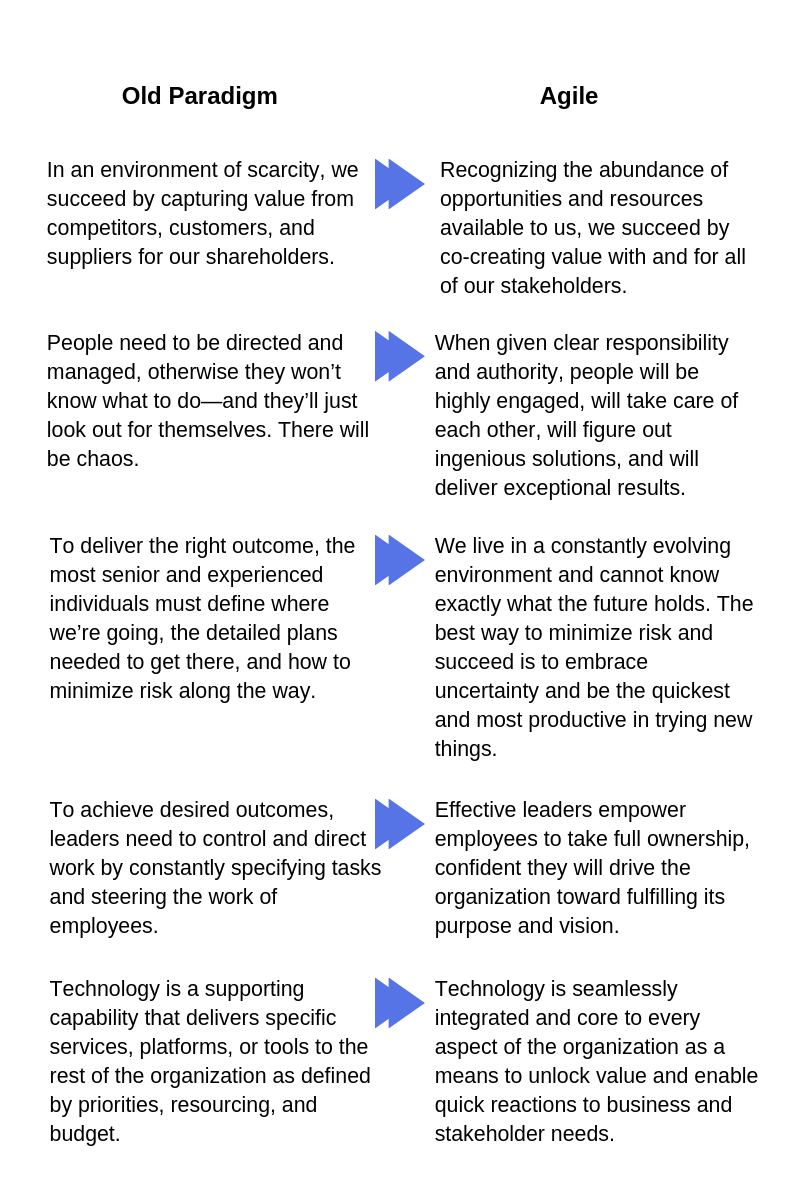With competition reminiscent of the Wild West, organizations that can react to change swiftly and offer quality have a competitive edge. Many organizations have changed their mindsets from top to bottom to achieve the benefits of iterative teamwork and flexibility. For those that lag behind, we’ve collected guidelines from the world’s top project management consulting group to ensure that your business doesn’t get stuck in the middle of your Agile transformation.
In 2018, Agile hit its peak. McKinsey & Company dedicated research to Agile concepts and principles and suggested ways to make them work in different environments such as manufacturing, construction, finance, and many others. The Agile rollout, however, turned out to be more difficult than it appeared at first glance. Companies worldwide have a hard time integrating Agile working practices. Many Agile adopters fail to recognize their teams as autonomous. These trends trigger the researchers to uncover cumbersome Agile rituals and explain why some companies fail to see the real benefits of this project management methodology. Many organizations have a tendency to cherry pick from the Agile manifesto and ignore some of its parts.
What, then, is the best way to come from an old project management methodology to Agile with a capital “A”? Let’s take a look at some recommendations from the top management consultants.
Adopt Five Mindset Shifts
To do Agile right, McKinsey encourages organizations to follow the five trademarks of Agile organizations and stick to the new project management paradigm that appeared in response to the digital revolution. The McKinsey Agile Tribe, a group of over 50 global experts from various disciplines, see the old project management paradigm as treating organizations like machines. This paradigm still follows project management principles introduced by Henry Ford a century ago and continued by Henry Gantt. The digital revolution that has started to shape new economies and industries, however, demands an approach that allows companies to respond to new trends: quickly evolving environments, digitization, and a war for talent.
Nowadays, McKinsey experts stress that organizations should be regarded as living organisms, with stability and dynamics as their core attributes. As a matter of fact, they envision Agile processes as forming a new dominant organizational paradigm that will define work for the next 100 years.
Agile organizations mobilize quickly, are nimble, empowered to act, and make it easy to act. In short, they respond like a living organism. — McKinsey
But in the shifts companies have to make from the old mindset to the new, there are five layers of transformation to overcome, according to researchers:

From The Five Trademarks of Agile Organizations by McKinsey.
Take a System View and Unify Agile Initiatives
While going from no system to pure Agile in a startup may be a cinch, implementing Agile in large corporations is complex and difficult process to embed; it doesn’t happen with the snap of a finger, but demands changes to core management processes. Companies going through this transformation often suffer from “one gear spinning really fast and another one spinning at a different rhythm,” according to one McKinsey podcast. “You have to bring every part of the organization along so that you’re speaking a common language and so that you’re shifting the way that you operate as a whole,” says Belkis Vasquez-McCall, a McKinsey researcher.
Read more: How to Blend Agile Principles into Your Methodology
In April 2018, McKinsey brought to light seven missteps that mess up the Agile transformation. Their article is a project management guideline of what adopters shouldn’t neglect with regard to Agile concepts and principles. The top missteps are failing to have alignment and failing to understand the value Agile can bring to each delivery unit of the enterprise.
While we don’t encourage attempts to design an end state in granular detail, the depth and breadth of an agile transformation requires aligning at a high level on the aspiration, the value it would deliver, and a plausible plan for achieving it. — McKinsey
Companies need to learn to treat Agile as a strategic priority and blaze a trail to full-scale Agile.
Migrate to a Product-Oriented Organizational Structure
To get one step closer to Agile, companies need to change their organizational structures from project-oriented to product-oriented and start with redefining roles. This means that a company needs strong product owners who will be accountable for leading dedicated teams. Hugo Sarrazin, a McKinsey senior partner in Silicon Valley, believes that there are several superpowers a product owner should have. From his own experience in product management, Sarrazin has learned that product owners need to work in three different worlds: the past, the present, and the future. While the present calls upon product owners to develop a laser focus on user stories and work diligently with the team, product owners still have to work in the past to validate existing functionality and live in the future to determine the next set of product capabilities. Put simply, they should have one leg here and one leg there.
Read more: How to Overcome 3 Major Challenges in Managing Multiple Projects
To work in three different worlds is difficult unless product owners are supported by project management software that allows them both to do a retrospective analysis of the team’s work and see what’s on their plate at the moment. Seamless software integration can help experts carve out time for defining strategic goals.
The list of McKinsey’s tips keeps growing. It also goes without saying that Agile, in unison with technology, is our magic wand. Digitally competent project managers achieve better results in less time. So stay tuned.
Written by Iryna Viter


